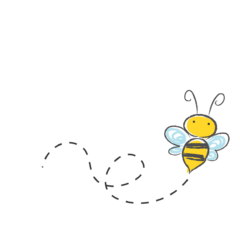As an Amazon Associate I earn from qualifying purchases.

It is not one size fits all to developing mindfulness or meditating. There are so many diverse meditation practices that offer ways to build more self-awareness beyond just sitting still on the floor in Lotus position
Granted, it would be great to be someone who effortlessly sits in lotus position, meditating for an hour. But that is not who I am, and I’m guessing you might not be either. So, I’ve found ways to add mindfulness to my daily routine, even if it’s just for a few minutes at a time. I focus on my breath and clear my mind during simple activities like getting ready for work, eating my lunch, walking my dog, waiting in line, or simply walking down the hall to the elevator. There are so many opportunities available in our days to embrace mindfulness, and for now, this is my most authentic approach, and I’m happy with it. But when I have more time, I love to explore other modalities that promote self-awareness, relaxation, a quieter mind, liberation from relentless thoughts, and if they are fun and boost my well-being, that’s a win. Here are nine practices that offer other ways to encourage more mindfulness and are not about sitting and focusing on your breath.
1. Chanting Meditation
Chanting meditation involves the repetition of sacred chants or hymns from religious or spiritual traditions. The rhythmic and melodic nature of chanting can help quiet the mind, induce relaxation, and foster a sense of unity with a higher power. Whether it’s the “Om” mantra from Hinduism or the “Amen” from Christianity, chanting can provide a profound spiritual experience and a deep sense of peace.
2. Crystal Bowl Meditation

Crystal bowl meditation utilizes the power of sound and vibration to facilitate a meditative state. Practitioners often use crystal singing bowls that produce soothing, resonant tones when played. The vibrations permeate your body as the bowls are played, helping you relax and enter deep meditation. The harmonious sounds can also have healing effects on the mind and body.
3. Dynamic Meditation
Dynamic meditation is a more active form of meditation that involves physical movement. Osho, a spiritual teacher, developed it. This practice includes vigorous breathing, jumping, and cathartic expression to release pent-up emotions and tension. Dynamic meditation eventually leads to stillness and inner peace by expelling negativity and stress through physical action.
4. Fire Kasina Meditation

Fire kasina meditation is a technique in which the practitioner focuses their attention on a candle flame or another source of fire. This concentrated attention helps develop concentration and insight. The flickering flame symbolizes transformation and impermanence, guiding the practitioner toward a deeper understanding of the self and the world.
5. Holotropic Breathwork
Holotropic breathwork is a powerful breathing technique that induces altered states of consciousness. Developed by Dr. Stanislav Grof, this method involves controlled, deep breathing to access hidden emotions and memories. It can lead to profound experiences of self-discovery, emotional release, and healing as it helps individuals explore the depths of their psyche.
6. Laughing Meditation
Laughter is often called the best medicine, and laughing meditation harnesses its healing power. This practice involves spontaneous laughter and laughter exercises to reduce stress, boost mood, and increase the release of endorphins, the body’s natural feel-good chemicals. Through laughter, you can lighten your emotional load and connect with joy.
7. Mantra Meditation
Mantra meditation involves repeating a sacred word or phrase, known as a mantra, to calm the mind and access higher states of consciousness. Mantras can be specific to a spiritual tradition or chosen personally for their meaning or resonance. The repetition of the mantra serves as a focal point, allowing the practitioner to transcend everyday thoughts and find inner stillness.
8. Sound Bath Meditation

Sound bath meditation is a passive meditation practice in which participants lie down while a facilitator plays various instruments, such as gongs, singing bowls, and tuning forks. The vibrations produced by these instruments create a therapeutic and deeply relaxing experience. Sound bath meditation can help alleviate stress, reduce anxiety, and promote physical and emotional healing.
9. Walking Meditation
Walking meditation is a mindful practice that involves walking slowly and deliberately while paying full attention to each step. Often done in a specific pattern or along a designated path, this practice enhances awareness, presence, and a deep connection with the environment. Walking meditation can be especially beneficial for those who struggle to sit still for extended periods.
Mindful Exploration
These unique meditation practices offer the ability to explore diverse meditation practices and avenues to inner peace, self-discovery, and holistic well-being. Find a method that resonates with your needs and preferences and give it a go. Embrace the diversity of meditation techniques, and let them guide you on a transformative journey towards a more centered and harmonious life.
